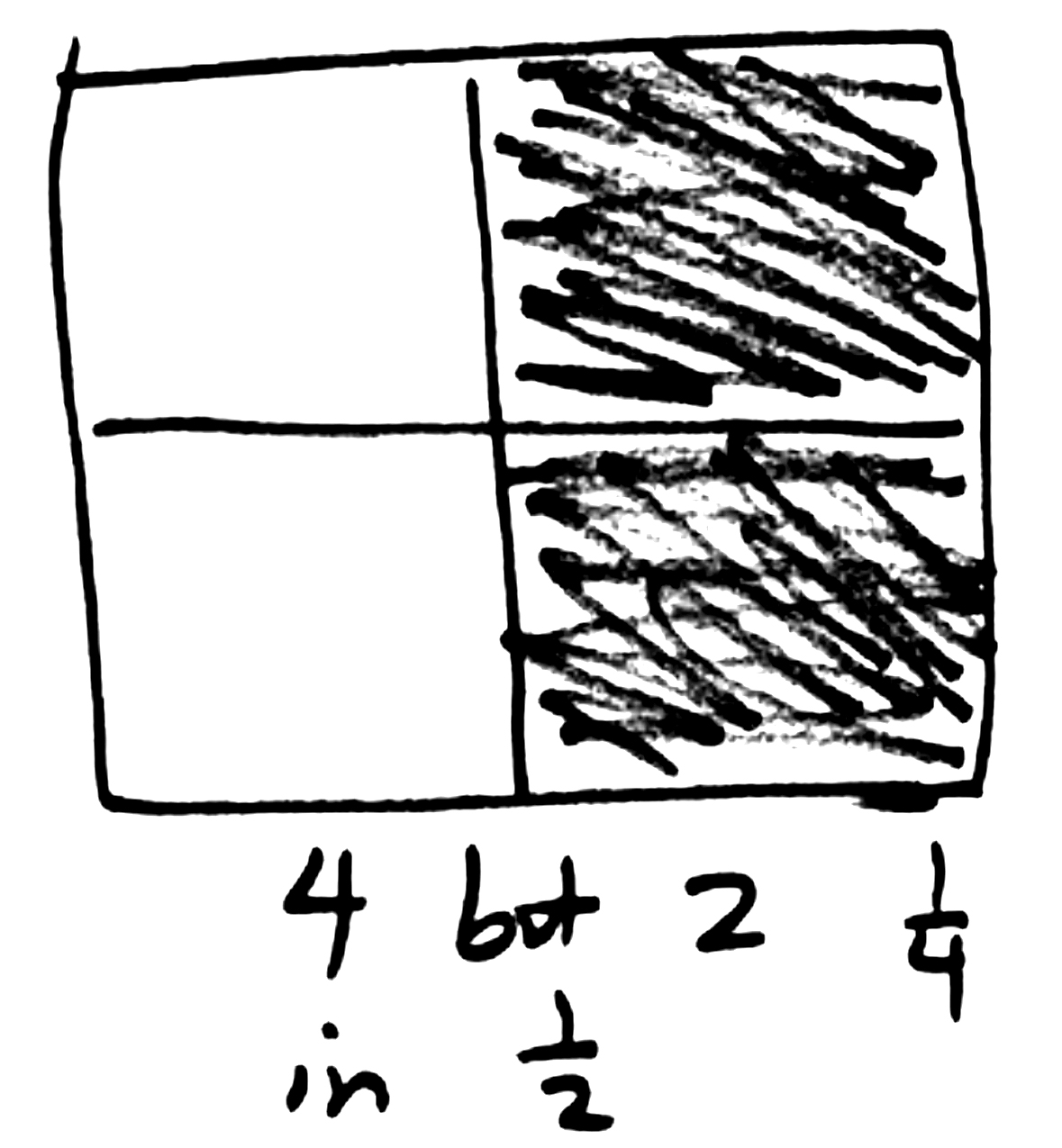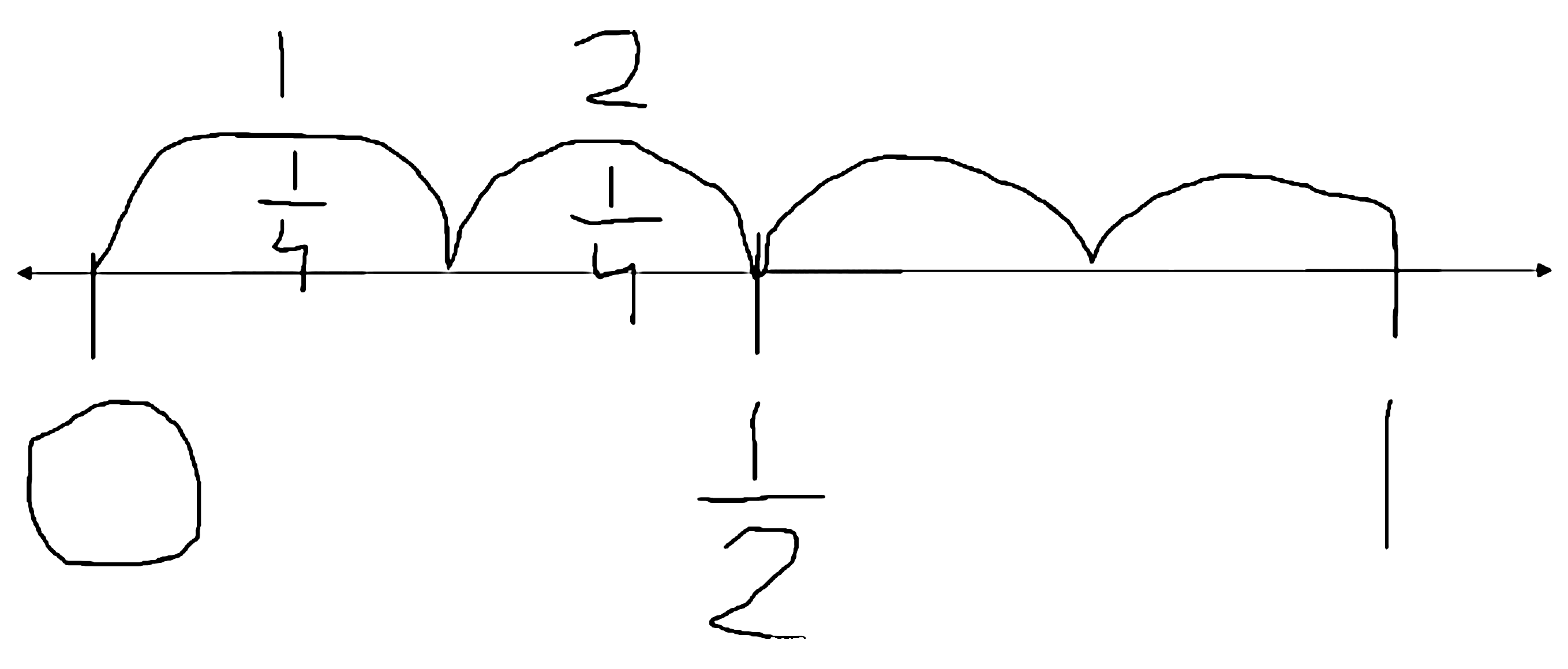By Victoria Bill and Laurie Speranzo, posted July 17, 2017 —
When
students talk about their solution paths and others’ solution paths, they have
opportunities to make sense of ideas and, therefore, have some ownership of
them as well. The students in the classroom vignette below are learning a great
deal, because they are talking about models and making sense of mathematics.
The teacher is also learning about student thinking and reasoning. See what you
understand about these students' understanding for division of a fraction by a
fraction.
Students are explaining that 1/2 divided by 1/4 equals 2. Their
discussion follows:
Jessica: It is two, because if you think
about a half of a cake, you want to figure out how many fourths are in the half-cake,
and there are two of them.
Ms. Clark: Who understood and can put the idea
into their own words?
Jason: She said there is half, and inside half—if you
cut it into two pieces—there are two smaller pieces.
Aisha: Those two pieces are fourths.
Ms. Clark: Can anyone add on to what she said?
Sean: Can I make a drawing? You can do one-fourth times four, and you get two of them.

Ms. Clark: I think I understand your drawing. Who
can come up, point to Sean’s drawing, and explain one more time what he said?
Juan: I don’t understand why you did that.
Ms. Clark: Who can explain what he did?
Jason: He knows that fourths mean there
will be four pieces, so he is figuring out how many fourths are in the whole
and the half.
Sean: There are four pieces in the whole,
but we only have half, so this means now there are two-fourths in the half.
Ms. Clark: I need to hear that back a few more
times to make sure I understand the thinking.
We know it sounds trivial, but more
and more, we are convinced that when a student shares his or her work, all
students benefit from follow-up opportunities for between five and eight
students to—
-
say back
what they heard,
-
add on,
-
make a
drawing,
-
say it in
their own words,
-
agree or
disagree, and
-
summarize
the ideas.
Had the teacher moved forward and just accepted the
first student’s response, many other students in the classroom might not have
understood or have been totally clear about why the quotient to 1/2 ÷ 1/4 = 2. The teacher would also have missed an opportunity to
learn more about how her students were thinking about the problem.
The Institute for Learning* calls the process of
hearing from many students in the classroom, talk that is “accountable to
community.” Imagine the teacher has a student who created the following number
line to solve 1/2 ÷ 1/4:

This visual model looks incredibly
different from the area model first introduced. A different representation of
the whole is shown with two one-fourths contained within the one-half. We
suggest that at least five to eight students would need to point to and explain
what is happening with the number line model before the teacher can be sure
that all the students have a true understanding of the math in the model.
Only after discussing both models can
the teacher finally ask students to compare and contrast the models. If you do
not understand each solution path, you cannot make comparisons between solution
paths. By asking students to say more, to add on, to agree or disagree with
their peer’s solution paths, the teacher can focus on the uptake of student
ideas (Applebee et al. 2003; Nystrand 2006; Soter et al. 2008).
Engle and Conant (2002) show that
productive disciplinary engagement occurs in learning environments
characterized by (1) giving students authority to address problems, (2) holding
students accountable to others and to shared disciplinary norms, (3)
problematizing subject matter by asking students to compare and contrast
solution paths, and (4) providing students with relevant resources, such as context,
manipulatives, or the freedom to make diagrams or number lines.
Your Turn
Engage
students in solving and discussing the solution paths to a high-level
mathematics task. If the task is a high-level task, students will have multiple
ways to solve the task. Remember, when you have a solution path shared, you
should call on five to eight students by using the questions above. This means
you may use a question more than once. Write and tell all of us what happens in
your classroom as several students say and say again in their own words what
they heard. Please share in the comments section or reach out to Victoria Bill
or Laurie Speranzo.
References
Applebee,
Arthur N., Judith A. Langer, Martin Nystrand, and Adam Gamoran. 2003. “Discussion-Based
Approaches to Developing Understanding: Classroom Instruction and Student
Performance in Middle and High School English.” American Educational Research Journal 40, no. 3 (Autumn): 685–730.
Nystrand,
Martin. 2006). “Research on the Role of Classroom Discourse as It Affects
Reading Comprehension.” Research in the
Teaching of English 40, no. 4 (May): 392–412.
Soter,
Anna O., Ian A. Wilkinson, P. Karen Murphy, Lucila Rudge, Kristin Reninger, and
Margaret Edwards, M. 2008. “What the Discourse Tells Us: Talk and Indicators of
High-Level Comprehension.” International
Journal of Educational Research 47 (6): 372–91.
Engle, Randi A., Faith R. Conant.
2002. “Guiding Principles for Fostering Productive Disciplinary Engagement:
Explaining an Emergent Argument in a Community of Learners Classroom.” Cognition and Instruction 20 (4): 399–483.
The Institute for Learning (IFL) is an outreach of the
University of Pittsburgh's Learning Research and Development
Center (LRDC). Comprising scholar
practitioners, the IFL helps educators bring what research tells us about
teaching and learning into classrooms to help students grow their intelligence
and reach the high standards demanded by today’s colleges and workforce. We
believe—and research confirms—that virtually all students are capable of high
achievement, if they work hard at the right kinds of learning tasks.


Victoria Bill is
a Resident Fellow with IFL at the Learning Research and Development Center,
University of Pittsburgh. She also co-authored with DeAnn Huinker the 2017
NCTM publication Taking Action: Implementing the Effective Teaching
Practices in Grades Pre-K–5. Laurie
Speranzo is a resident fellow with IFL at the Learning Research and
Development Center, University of Pittsburgh. In addition to her work at IFL,
she has recently been appointed to serve on the editorial panel of NCTM’s Mathematics
Teaching in the Middle School journal.